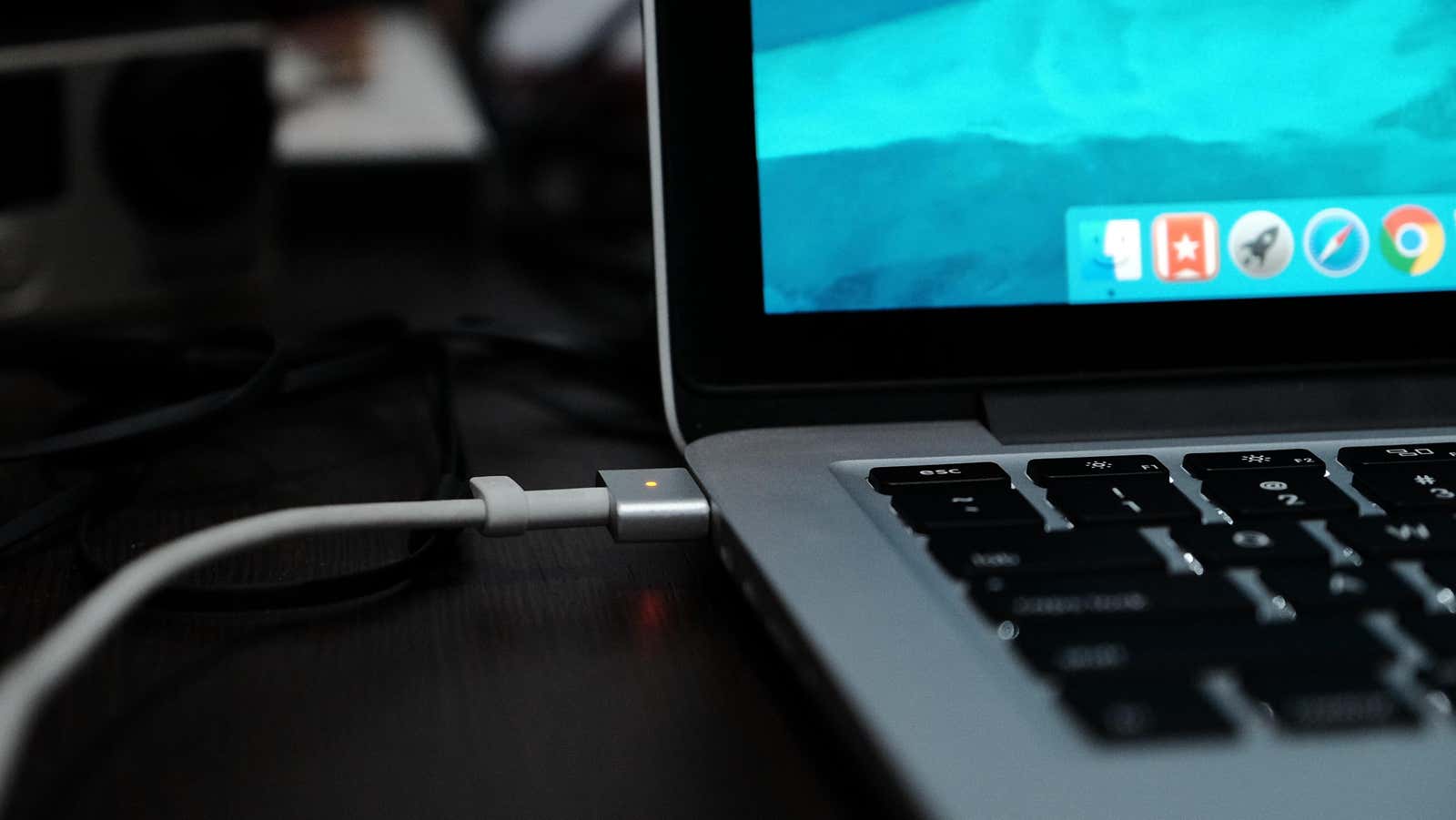This Free Utility Will Extend the Battery Life of Your Ancient MacBook

If you’re rocking an old MacBook, you probably don’t expect it to keep up with the latest and greatest – Apple’s silicon machine will obviously top this 5-year-old Intel Mac any day now. However, your aging laptop probably still has some life left. If yours gets very hot and the battery drains too quickly, a quick hack can make it run longer and longer.
Your first impulse to conserve battery power on an Intel-based MacBook may be to turn on power saving mode. This setting is definitely useful for slowing down the battery usage rate on your computer, but it does create a few problems. First, not all Intel Macs support Low Power Mode as it was only introduced with macOS Monterey . If yours doesn’t support Monterey, you obviously won’t have a choice.
Secondly, we don’t really know much about how power saving mode works on a Mac. We can assume that this feature reduces performance, background tasks, data fetching, and other resource-intensive processes, but Apple does not disclose exactly how. The company is more transparent about how power saving mode affects iPhones and iPads; for Mac they just say it ” manages power-hungry applications and processing “.
It’s safe to say that Low Power Mode modifies your Mac’s performance in several ways to improve battery life. That’s all well and good, but it might be a little overkill. Instead, look for the likely culprit behind overheating and battery drain on your Intel Mac: Turbo Boost.
Turbo Boost drains your Intel MacBook battery
Turbo Boost is an Intel feature designed to put more computing power into a computer chip for use when you need it. For most tasks, your Mac’s processor maxes out at its base processing speed, say 2.7 GHz. When the computer feels it needs more processing power, it can turn on Turbo Boost to temporarily speed up the processor to, say, 3.6 GHz. In theory, this is a reasonable way to balance portable processor performance with solid battery life. However, even though Turbo Boost only works intermittently, when it kicks in it can kill your Mac’s aging battery. It can also heat up old Intel chips, and if they get too hot, your machine’s performance will be degraded anyway, defeating the intended purpose of Turbo Boost.
Personally, I value longer battery life over performance, especially when I’m on battery. If you agree, tryTurbo Boost Switcher . This free utility allows you to turn Turbo Boost on and off at any time. So, whether you’re writing an email or editing a video in Final Cut Pro, your Mac’s processor will never overclock. This simple change can save hours of battery life and keep the laptop cool and the fan speed low. To let you know exactly how it works, Turbo Boost Pro allows you to constantly monitor your CPU speed and temperature.
Turbo Boost Switcher claims to reduce battery usage by 25% and CPU temperatures by 20%, although it only cites a 2015 blog post as evidence . However, the reviews are mostly positive and I personally had a good experience with it. While it may or may not reach those high scores, it will likely improve your overall MacBook experience.
The app is great to use in its free form (although it often asks for your Mac’s password), but the paid “Pro” version offers some interesting extras. You can set the utility to automatically turn Turbo Boost on or off when your battery gets too low, when you open certain apps, when your CPU temperature and fan speed reach a certain threshold, or when you power off, for example. Turbo Boost Switcher Pro also only asks for your password once, which could cost $10 right now.
Paid or free, the core function is the same: whenever you’re willing to trade a potential performance boost for extra battery life, Turbo Boost Switcher makes it possible without worrying about macOS stalling other processes in the background.